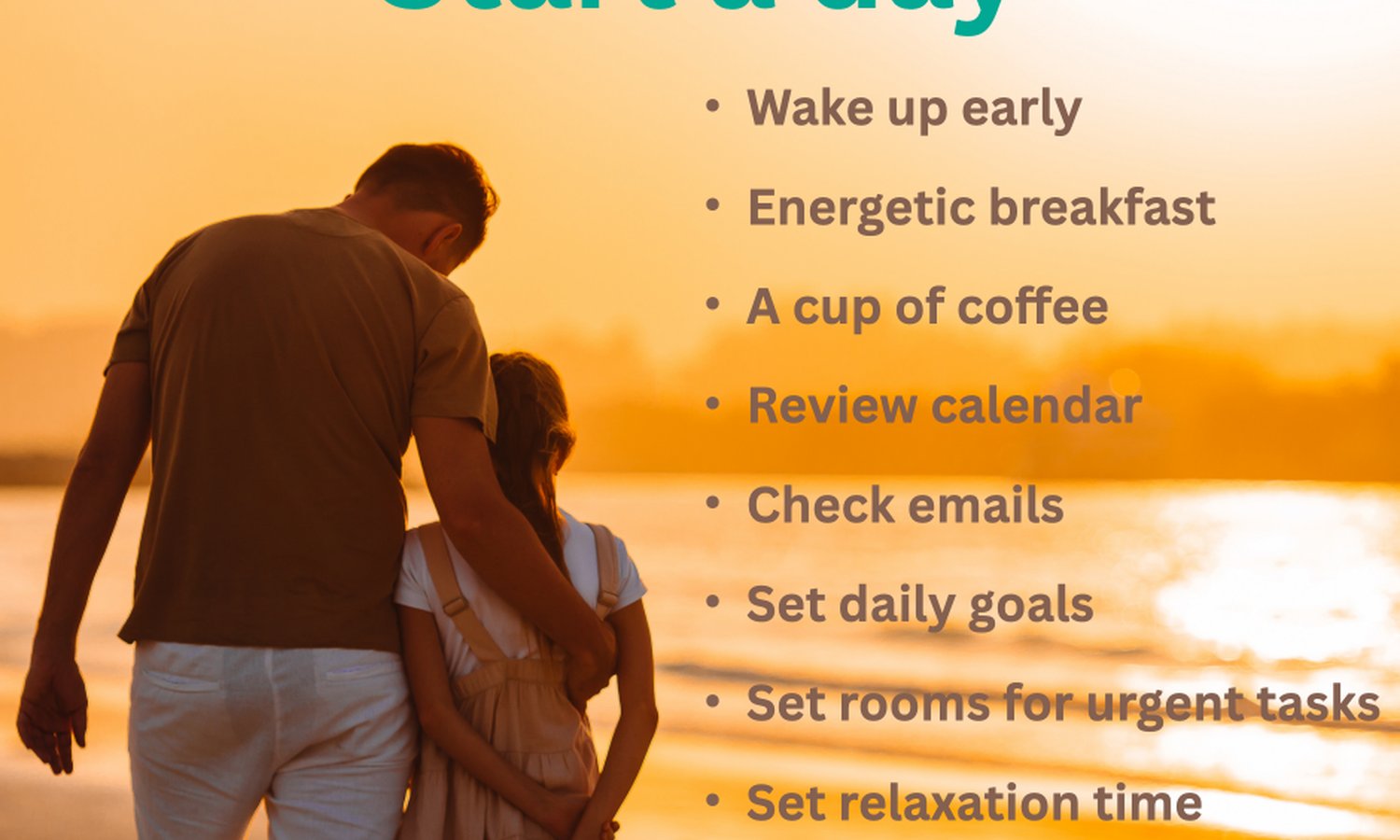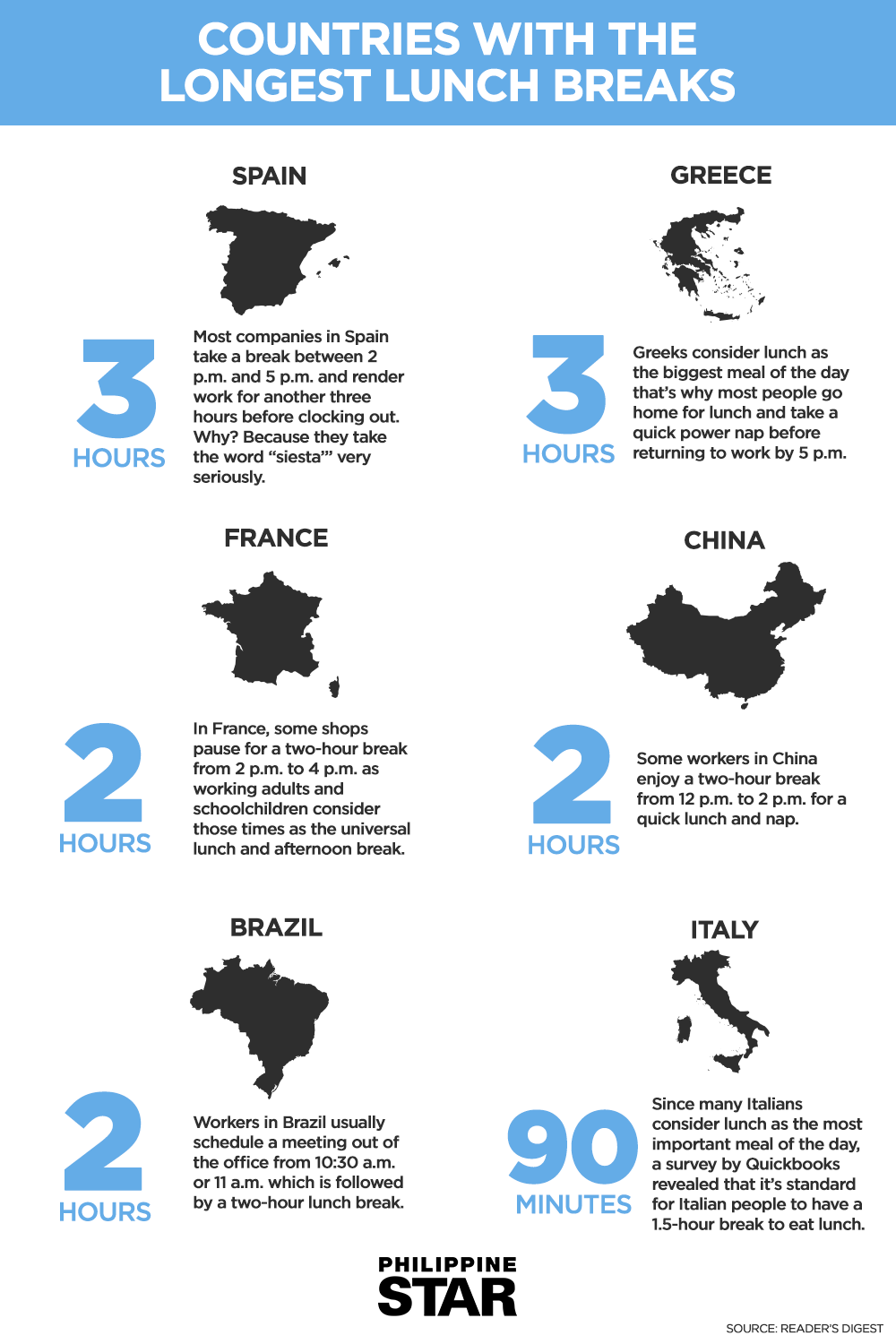How to Plan Your Day as a Successful Developer
By JoeVu, at: Oct. 22, 2023, 6:26 p.m.
Estimated Reading Time: __READING_TIME__ minutes


Introduction
Efficiently planning your day is essential for developers aiming to balance productivity with creativity and problem-solving. As a professional developer with 14 years of experience working with diverse companies across the globe—including in the US, Australia, UK, Japan, Kenya, Austria, and the UAE - I've come up with strategies that help manage time, enhance focus, and maximize output, all while keeping stress at bay. Despite a demanding career, I also manage to juggle personal commitments:
- Raising two daughters
- Maintaining an active lifestyle with regular sports activities like tennis, football, and gym sessions (3-5 times per week).
- Recharging by planning 3-4 travel trips each year.
In this guide, we’ll explore these effective strategies, which can help you achieve a similarly balanced and productive lifestyle.
Understanding Your Role
Knowing the specific requirements of your role is pivotal for effective day planning. Take, for example, the role of a core developer. A core developer must:
-
Understand the Project Overview: This includes a thorough grasp of the project's features, goals, and long-term vision. It’s crucial to comprehend how your tasks align with the larger objectives of the project.
-
Understand Weekly Plans: Be familiar with the week's objectives, including a detailed list of issues to be addressed daily or weekly. This helps in setting realistic daily goals and efficiently organizing your workload.
-
Cooperation with Team Members: Knowing how to collaborate effectively with other developers, designers, and project stakeholders is essential. This includes regular communication and sharing of resources and knowledge to enhance team synergy.
-
Facilitate Leaders/Managers' Work: Assist team leaders and managers by providing clear updates, anticipating project needs, and contributing to strategic planning. Your proactive approach can significantly streamline project execution.
-
Resolve Conflicts: Act as a mediator to resolve conflicts between team members and other teams. A core developer often holds a comprehensive understanding of the project dynamics, making them ideally positioned to suggest compromises and solutions that keep the project on track.
-
Mentor Junior Developers: Help junior developers grow by guiding them through the complexities of the project, offering advice, and sharing experiences that can accelerate their professional development.
-
Maintain Documentation: Keep all project documentation up to date. This not only helps in maintaining project continuity but also ensures that new team members can quickly come up to speed.
-
Write Tests: Regularly write unit, integration, and stress tests. This testing is crucial for maintaining the quality and reliability of the software, preventing future bugs, and ensuring that the system can handle real-world stresses.
The Developer's Toolkit
A well-equipped toolkit is crucial for any developer aiming for efficiency and productivity. Here are some essential components of a developer's toolkit:
- Integrated Development Environments (IDEs): Choose an IDE that best fits the programming languages and frameworks you use, such as Visual Studio Code, IntelliJ IDEA, or Eclipse.
- Version Control Systems: Tools like Git help manage changes to your codebase, facilitating collaboration and version tracking.
- Databases: Familiarity with relevant databases, whether SQL-based like PostgreSQL and MySQL or NoSQL like MongoDB, is essential.
- Debugging Tools: Tools that can help you trace and fix bugs efficiently are indispensable.
- API Testing Tools: Tools like Postman or Swagger for testing and interacting with APIs.
- Communication Tools: Platforms like Slack or Microsoft Teams are vital for staying connected with your team.
- AI Accounts: Github Copilot, ChatGPT, Gemini, PerPlexity and many others are assistants for not only developers but also every person to facility manual jobs
Setting Up Your Workspace
Creating an optimal workspace is key to maintaining productivity and health during long hours of coding:
- Organized Desk: Keep your workspace clutter-free to minimize distractions and mental clutter. You are going to spend 8 hours at work, 1/3 of your life. Make it comfort and easy to concentrate.
- Proper Lighting: Good lighting is critical to reduce eye strain. Natural light is ideal, but if that’s not available, ensure adequate, soft artificial lighting.
- Quiet Environment: Ensure your workspace is free from distractions. If noise is unavoidable, consider using noise-canceling headphones. It is not required to have a stunning view but the view should be nice and fresh.
- Ergonomic Furniture: Invest in an ergonomic chair and desk to support posture and reduce the risk of strain or injury.
- Multiple Monitors: Use dual monitors to extend your digital workspace, allowing more efficient code and document handling. Again, this is not a must.
Morning Routine
I often start my day at the gym (running, walking, workout, swimming), at around 6-7am. Then waking up my daughters and take them to the schools. Get back home and have breakfast with my wife. I start my work at around 8:15am.
A structured morning routine sets the tone for a productive day. Here’s how you can optimize your mornings:
Review Your Calendar
Start your day by reviewing your schedule, project timelines, blockers. As things change frequently, owners have new ideas that they want to done immediately. This helps you anticipate and prepare for meetings, understand your deadlines, and plan collaboration times effectively. Being aware of your day’s structure allows you to mentally prepare for the tasks ahead.
I usually spend the first 30 minutes to list out all projects that I am working on, self-review and plan their next steps. As I often left applications and notes opened at the end of my day, so every morning I can recheck them easily.
Set Daily/Weekly Goals
After understanding your schedule, set clear and achievable goals for the day. On Monday, a week plan should be roughly designed too. Prioritize your tasks based on their urgency and importance. This helps to streamline your focus and efficiently allocate your efforts throughout the day.
The goals should be specific, as much detail as possible. They should be easy to eatimate.
Time Blocking Techniques
Implement time blocking to manage your day effectively. Allocate specific hours of your day to different types of work, such as coding, meetings, and brainstorming. This minimizes context switching and maximizes productivity during periods of deep work. Setting reminders is a good strategies, ex: Slack Reminder is a good choice.
Handling Interruptions and Distractions
Minimize interruptions by setting boundaries and specific times to check emails and messages. Inform your team of your availability, and consider using tools like "Do Not Disturb" modes or noise-canceling headphones to maintain concentration.
Do not let others interrupt you in important tasks, ex: meeting with clients, concentration tasks or difficult tasks.
The Pomodoro Technique
For maintaining high levels of concentration and avoiding burnout, utilize the Pomodoro Technique. Work in concentrated bursts of 25 minutes followed by a 5-minute break. This method helps in maintaining mental agility and prevents fatigue by ensuring regular short breaks.
At first, this technique seems to be only for SMALL tasks, what do we do for HUGE tasks? Remember the strategy "divide and conquer" . Every task can be splitted into multiple smaller pieces, each piece should be easy and can be done in 15 mins or 25 mins. If you have problem with this technique, this means you have problems with your problem-solving skills.
Lunch and Breaks
Taking regular breaks is vital for mental and physical well-being. Use this time to detach from work, which can lead to increased productivity and better health.

Europe
- Spain: Known for its "siesta," Spain traditionally has longer lunch breaks that can last up to two hours, typically from 2:00 PM to 4:00 PM. Many workers go home to have lunch with their families and even take a short nap.
- France: Lunch breaks are a cherished part of the day, often lasting at least an hour or more, usually from 12:00 PM to 2:00 PM. It’s common for workers to leave the office to enjoy a relaxed meal at a nearby café or restaurant.
- Germany: Lunch breaks are typically practical and efficient, lasting about 30 to 60 minutes. Workers might eat in office canteens or nearby eateries.
Asia
- Japan: Lunch breaks are usually around an hour, starting from 12:00 PM. Many employees eat bento boxes either in lunchrooms or at their desks, known as "desk lunch" or "shokuiku."
- Vietnam: Typically, lunch breaks last from 12:00 PM to 1:30 PM, with many workers taking a brief nap afterward, which is culturally accepted and even encouraged in some businesses.
- India: Lunch breaks can vary, but they are usually about an hour long, starting around 1:00 PM. Many workers bring home-cooked meals to share with colleagues.
North America
- United States: Lunch breaks are often brief, typically ranging from 30 minutes to an hour, starting around 12:00 PM. Many workers eat at their desks or grab a quick meal from a nearby restaurant.
- Canada: Similar to the US, lunch breaks are usually about an hour long. In many professional settings, eating lunch at one’s desk is quite common, although some might step out for a quick bite.
South America
- Brazil: Lunch is an important meal of the day, with breaks typically lasting about one to two hours. Many Brazilians go home to eat with their families.
- Argentina: Lunch breaks are also significant, often lasting up to two hours. It's a time for a substantial meal, sometimes followed by a short rest.
Africa
- Nigeria: Lunch breaks are typically about an hour long but can extend depending on the nature of the work environment. Many workers enjoy hearty meals that reflect the local cuisine.
- South Africa: Lunch breaks are usually an hour long, with many workers using the time to eat meals at onsite cafeterias or nearby eateries.
Australia
- Australia: Lunch breaks are usually about an hour long, starting around 12:00 PM. It’s common for employees to leave the office to eat in local cafés or parks, especially in urban areas.
Mid-Day Check-In
Around midday, take a moment to evaluate your progress on the day's tasks. This check-in is crucial for assessing how your day is unfolding and adjusting your plan if needed. I usually do this around at 3pm or 4pm. Consider the following:
- Review Completed Tasks: Quickly assess what you've accomplished so far and whether it aligns with your morning goals.
- Adjust Priorities: If certain tasks are taking longer than expected, or if new priorities have emerged, realign your afternoon schedule accordingly.
- Prepare for Afternoon Activities: Ensure you're set up for any meetings, collaborative sessions, or deep work periods scheduled for the afternoon.
This mid-day assessment helps you stay on track and use your time effectively for the remainder of the day.
Dealing With Procrastination
Procrastination can hinder productivity, but there are effective ways to overcome it:
- Break Tasks into Smaller Steps: Large tasks can seem daunting, overwhelming and difficult. Breaking them down into manageable steps can reduce overwhelm and make starting easier. Smallest piece should be done in 15-30 mins.
- Set Mini Deadlines: For each small step, establish a mini-deadline. This creates a sense of urgency and helps maintain momentum.
- Limit Distractions: Identify and minimize distractions. This might involve using apps to block distracting websites or setting your phone to "Do Not Disturb" mode during focused work times.
- Use Motivational Techniques: Remind yourself of the benefits of completing the task, or set up a reward system for when you meet your goals.
Mark Twain said "Never put off till tomorrow what may be done day after tomorrow just as well."
Evening Routine
An effective evening routine is crucial for winding down from the day's work and setting the stage for the next day. You don't need spend the whole night for this, 30 mins or 1h is enough. You can do it when your kids are studying, this not only helps you to teach kids about a good habit but also tells them that they are not alone, the whole family are learning/gaining knowledge together.
Here’s how you can optimize your evening routine for maximum personal and professional benefit:
Reflect on the Day
Take time each evening to reflect on what you've accomplished and what areas might need improvement. This could involve a brief journaling session where you list your completed tasks and any challenges you faced. This reflection not only provides a sense of closure for the day but also aids in identifying areas for continuous personal and professional development.
Plan for Tomorrow
Planning your tasks for the next day helps in multiple ways. It not only saves time the following morning, allowing you to start your day with a clear agenda but also helps you mentally prepare for upcoming tasks. This preparation can make it easier to start the day productively, as you’ve already mapped out your priorities and can dive straight into your work.
Using Tech to Stay Organized
Utilize technology to keep your tasks and schedule organized. Tools like task managers (e.g., Asana, Trello), calendars (e.g., Google Calendar), and reminder apps can significantly enhance your ability to track your responsibilities and deadlines. These tools can also help in efficiently planning out your days and weeks, ensuring you’re always aware of upcoming commitments and can prepare accordingly.
Staying Motivated
Maintaining motivation can sometimes be challenging, especially after a long day. Set clear, achievable goals and reward yourself for reaching milestones. This could be as simple as treating yourself to a favorite meal, enjoying a leisure activity, or taking time off for personal pursuits. Recognizing and celebrating achievements can rejuvenate your enthusiasm and drive for your work.
Enjoy a cup of black tea or leaf tea (Chrysanthemum) and read a book chapter.
Conclusion
Effective day planning is more than just a schedule; it’s about creating a balanced routine that aligns with your personal and professional goals, allowing you to be the best developer you can be.
Get a paper and plan your day now, do not delay anymore!!!
FAQs
1. What is the best time management technique for developers?
One of the most effective time management techniques for developers is the Pomodoro Technique. It involves working in focused bursts of 25 minutes, followed by a 5-minute break. This method helps maintain high levels of productivity and mental agility throughout the day. Additionally, time blocking can be very effective, allowing you to allocate specific parts of your day to different tasks, thus minimizing distractions and maximizing efficiency.
2. How often should I take breaks to maintain productivity?
Regular breaks are crucial for maintaining productivity and avoiding burnout. It is generally recommended to take a short break of 5 to 10 minutes every hour. For longer work periods, a break of 15 to 30 minutes after every two hours of work can be beneficial. These breaks help refresh your mind, reduce eye strain, and keep you energized throughout the day.
3. What tools can help me stay organized?
Several tools can help developers stay organized:
- Task Management: Tools like Trello, Asana, and Jira allow you to manage projects, track progress, and collaborate with team members.
- Calendars: Google Calendar or Outlook can help you schedule and visualize your deadlines and meetings.
- Note-taking: Apps like Evernote, Microsoft OneNote, and Notion are excellent for organizing your thoughts, meeting notes, and tasks.
- Reminder Apps: Todoist and Any.do can help you keep track of your daily tasks and deadlines.
4. How do I handle days filled with meetings and little coding?
On days heavy with meetings, prioritize your tasks so that critical coding tasks are scheduled during your peak productivity times, either before or between meetings. Utilize brief periods between meetings for lighter tasks that require less concentration, such as reviewing code or responding to emails. It's also helpful to clearly communicate your availability to your team to manage expectations and avoid scheduling conflicts.
5. What strategies can help in managing work-related stress?
Managing work-related stress effectively involves several strategies:
- Regular Exercise: Physical activity can significantly reduce stress and improve your overall mental health.
- Mindfulness and Meditation: These practices can help you stay calm and focused, reducing the impact of stress.
- Proper Time Management: Avoid overcommitting and learn to say no when necessary. Use time management techniques to make your workload more manageable.
- Adequate Rest: Ensure you get enough sleep and take time to unwind after work.
- Healthy Boundaries: Set clear boundaries between work and personal life to prevent burnout and keep stress levels manageable.





